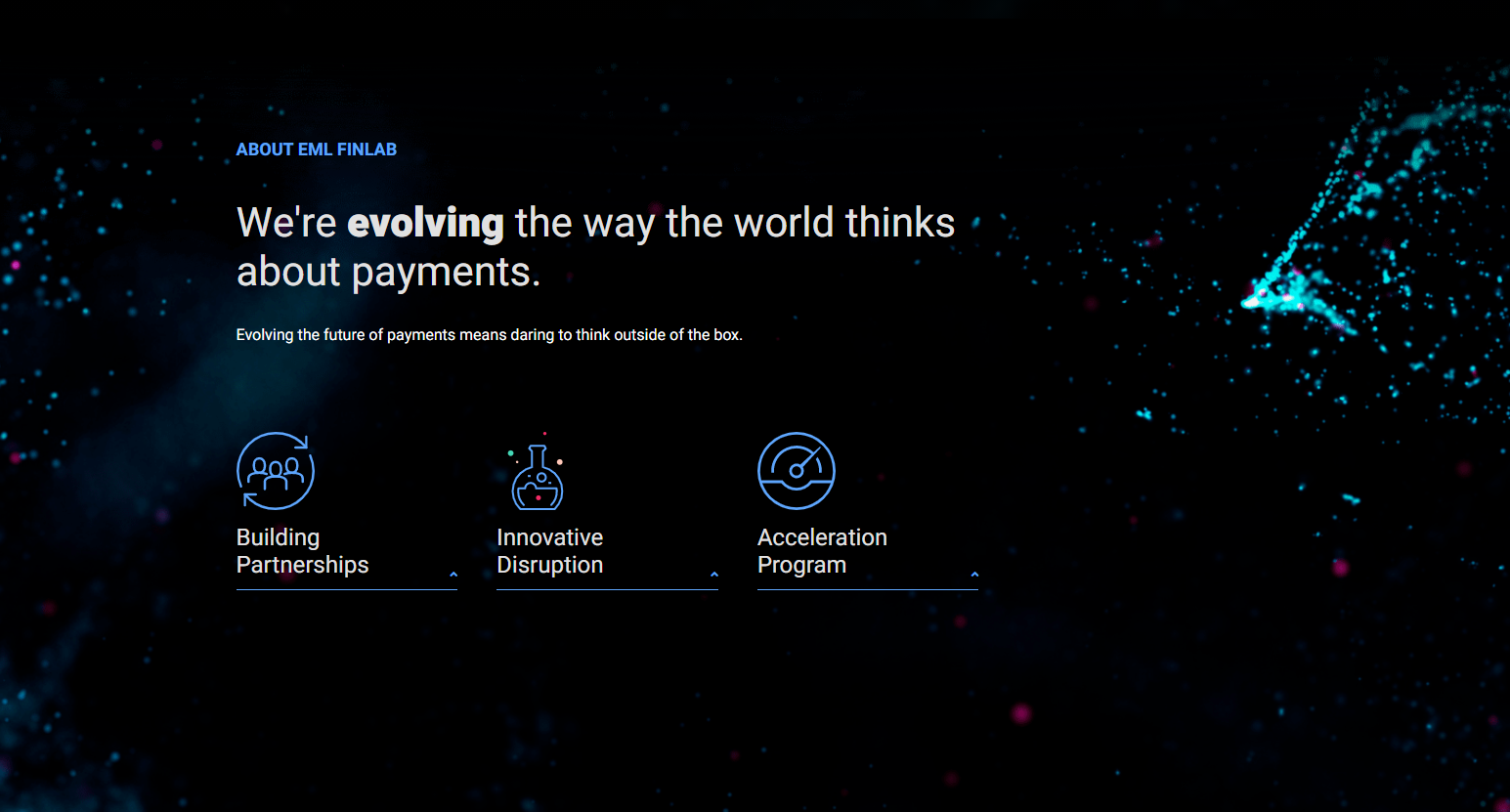The EML Payments Ltd (ASX: EML) share price has been nothing short of a rollercoaster for the 2020 calendar year.
If you were brave enough to buy during the COVID lows (the share price dropped as low as $1.33) you have earned a very respectable 300% on your money, based on prices in late November. Even if you bought EML shares as late as early November, you’re up a tidy 20%. As we have covered here at Rask in several of our articles on EML shares, the EML business has not been one of the COVID friendly tech companies soaring to all-time highs.
The market has literally beaten EML from pillar to post because, as of January when COVID hit, 90% of EML’s revenue was taken up in two of the company’s segments:
- Gifts and Incentive, and
- General Purpose Reloadable
To keep things simple, these two segments count a large portion of the income from physical and virtual cards for shopping malls, online gaming cards (think Sportsbet), salary sacrifice (company travel & meal expenses), and merchant incentives and rewards programs.
You don’t need to be a famous investor like Peter Lynch to know that these segments have not been the types of industries that have not fared well in the last 10 months. But now the question is, what is in store for EML? Can it bounce back to its all-time high of $5.60? Are there a few secret weapons under the hood for EML that are not fully being appreciated by the market?
On the 21st of October, EML shared a market update detailing part of its strategy called Project Accelerator. Project Accelerator is basically a pot of money EML has made available to invest in Fintech (financial technology) startups. If I’m honest, when this was announced I was a little skeptical and frankly thought it was a distraction — something else EML had to talk about apart from its slow revenue growth due to COVID.
However, after a little bit of digging last week, I’m starting to think that this strategy might have some really interesting outcomes for EML.

Source: EML FINLAB
Snooping around the EML website “Project Accelerator” has now been dubbed EML FINLAB. Anyone reading this article who has spent any time in the Australian startup community will know that everything on the picture above sounds pretty cool. Almost, dare I say, buzz-wordy. So is this the real deal? And should EML investors should get excited about FINLAB? In the closing session of EML Con, which can be watched here, CEO Tom Cregan, highlighted two early investments from FINLAB…
#1 – Interchecks
Interchecks is a business with a sole focus to simplify and enhance payouts and compliance for organizations around the world. In the US, a person would receive what is called a form 1099 if they are a sole proprietor, contractor, or they generate their own form of income aside from being an employee. In the US, your employer would pay a portion of your social security and medicare tax, so this form is required for a person generating their own income. While I’m not a US citizen that has been exposed to this, it hasn’t taken me long in my research to know that this process is difficult, confusing, and takes time… something a small business owner rarely has in ample supply. Interchecks also has a white-labeled payment portal for its customers and its payees to allow quick payments, file uploads, real-time analytics, and dynamic reporting. Even though Interchecks was founded in 2016, it has already announced an enterprise partnership with First Horizon bank. I think this is promising for the startup.
#2 – Hydrogen
Hydrogen is committed to empowering organisations to develop financial products for customers in the US and around the globe. Hydrogen is embedded finance simplified, allowing businesses to configure and embed financial components with a single line of code. The company boasts that a new customer can launch a new program and start earning revenue in under 5 minutes.
If you’re reading this and not sure what embedded finance is, put simply it is the seamless joining of traditional financial services, such as payment processing with another service or a financial service, into a non-financial app or website. A good example is when you got an UBER home last Friday (or sadly months ago) and paid at the end of the ride directly in the ride-share company’s app. This is embedded finance at work. Specifically in this case, embedded banking.
Hydrogen has been honored as world-changing technology from Fast Company, FinTech Startup of the Year from KPMG Luxembourg, and BBVA Open Talent USA. Hydrogen is also a graduate of the Mastercard StartPath, MassChallenge FinTech, and Plug and Play FinTech accelerator programs.
EML payments could be a runaway train that you might miss if you’re not careful
What I like about the strategy EML payments is executing is that it wants to be at the head of the pack, shoulder to shoulder with the pioneers of the rapid and changing payments industry. Yes, startups are risky. But traditional venture capitalists make a living when one of its many investments works out.
Where this is a little different to traditional VC — if I’m honest very different — is that EML Payments have a huge customer base that it wants to share these investments with. In a traditional VC environment, an investment is handed over to the aspiring start-up founder and the investment banker says “great, you’ve got some money, so go and get us a return on our investment”. EML seems to be talking about these investments/partnerships in a different way. Tom the CEO of EML describes it like this:
We are investing in companies where their technology can be integrated into our own and it expands our go-to-market offering, which in turn should increase our sales opportunities. We are also gaining distribution opportunities by being the provider of prepaid solutions to their customers, and from this, we expect to generate cash on cash return for each investment we make. When EML focuses on being more than just a processor and we can assist as an issuer and a program manager for these new projects, the higher the payment yield that is available to EML.
Essentially, EML is taking these startups under its wings and saying, “We want to offer your cool innovative products to our growing, global customer base. If you get big, then we will get bigger as a result. Oh, and if you have any other good ideas let’s work together on how we can make them work for both for us”. I think this is smart research and development that could create new products in a changing industry but also provide further investment opportunities for EML into the future.
“We are thrilled to be working with EML and have it as a strategic investor in Hydrogen. Together, we’ll be able to bring innovative card offerings to the masses, making it easy for any organisation to offer card capabilities. It’s embedded card services made easy.” – Mike Kane, Hydrogen’s Co-Founder & CEO.
Why this is important to know now
New payment programs generally start at zero but can rise quickly depending on the popularity of the program.
As an example, if I were to start a new digital payment business I begin with zero customers and on day one I make no money. If, however, my product is useful and as I start to make sales, customers like it, people talk about it at BBQ’s, maybe even an enterprise customer picks up my solution. My customer base grows. The advantage of being in the business of payments is that if the product takes off and growth starts, the program can grow very quickly. In investment lingo, this is an operation with high annual growth rate potential that will scale easily with this growth. If you haven’t had a detailed look through the EML segment report before, the VANS segment has seen this type of growth.
EML is on the search for the best and brightest in the payments industry and if I had a digital payments business knowing that I could get an investment of capital and exposure to a huge customer base, I’d be knocking on EML’s door. This positions EML as a provider of solutions that could power future aspects of the digital payment industry. If EML is the “go-to” for Fintech companies to execute quickly, this becomes a very interesting competitive advantage for EML to lock-in strong revenue growth into the next decade.
There is a quote I really love from the famous Canadian professional hockey player, that I have written at the top of my research documents, “I skate where the puck is going to be, not to where it has been”.
I think the trick for investors is not to think about what EML looks like today, but what it could look like, with high probability, in two-to-five years’ time.
Let’s do a very simple best (Bull) and worst (Bear) case scenario.
In the Bear case, these startups could be a flop, they don’t get traction and the small amounts of money EML has invested are written down to zero. However, in 2-5 years, shopping malls, salary sacrificing, and online gaming payments may be back in full swing and back to growing at pre-COVID rates. EML, in this case, has probably grown slowly but will have a few bad dings from investors due to failed investments.
In the Bull case, EML snags a few wins from its FINLAB ventures (that it part-owns and could buy outright) and become a vital function of a few future businesses with huge runways in front of them. These successes attract more start-ups to EML or potentially a few large corporates that need payment solutions. And let’s not forget that shopping malls and online gaming will probably be back in full swing. In this case, growth for EML could be back at the blistering pace we have seen in the last two years.
As a disclaimer, this is very quick reasoning, but it does point to there being more potential upside with limited downside, in my opinion. This is what I look for as an investor: when the odds look like the deck is stacked in my favor, the odds say, I should keep playing.
My bottom line on EML
When I look at how the market has been treating EML Payments over the last 10 months, it would seem that the market views EML more as a gift card company. To be fair, the gift and incentive part of its business does represent a reasonable chunk. However, if the stock market really is a weighing machine that is looking two years in advance, I feel like the whole picture for EML is not quite being grasped by others.
EML has said many times that the gift card part of its business will be dwarfed by other parts of its operation, and it’s easy to see it taking the steps necessary to do this. EML has also noted that it has seen good growth within the sales pipeline in the last two quarters. It really comes down to how these programs gain traction in a post-COVID world.
Optionality is one of my favorite ideas in investing. Ultimately, if a company you invest in has several different ways it can generate revenue, it only takes one of these revenue streams to “hit a home run” and set the company up for success. More ways to win for a business lowers the risk for you as an investor. EML is one to keep your eye on, otherwise, it might just run away from you.




